When utilizing Stochastic Oscillator stock trading, mastering the 10 best tips is crucial for refining your approach. Understanding how to interpret signals, adjusting parameters effectively, and recognizing key market conditions are just the beginning.
By incorporating advanced strategies like divergence analysis and combining the Stochastic Oscillator with other indicators, you can elevate your trading game to new heights. These tips can be the key to unlocking the full potential of your stock trading endeavors.
Stochastic Oscillator Basics
When analyzing stock trading with the Stochastic Oscillator, it's essential to grasp the foundational principles of this technical indicator.
The Stochastic Oscillator is an indicator that measures the closing price of a stock in relation to its high-low range over a specified period. Operating on a scale from 0 to 100, it identifies overbought conditions when the indicator rises above 80. This signifies that the stock may be overvalued and a potential reversal could be on the horizon.
Understanding these overbought levels is crucial for traders looking to make informed decisions based on market momentum. By utilizing the Stochastic Oscillator in this manner, traders can gain insights into possible trend reversals and optimize their trading strategies accordingly.
Understanding Stochastic Oscillator Signals
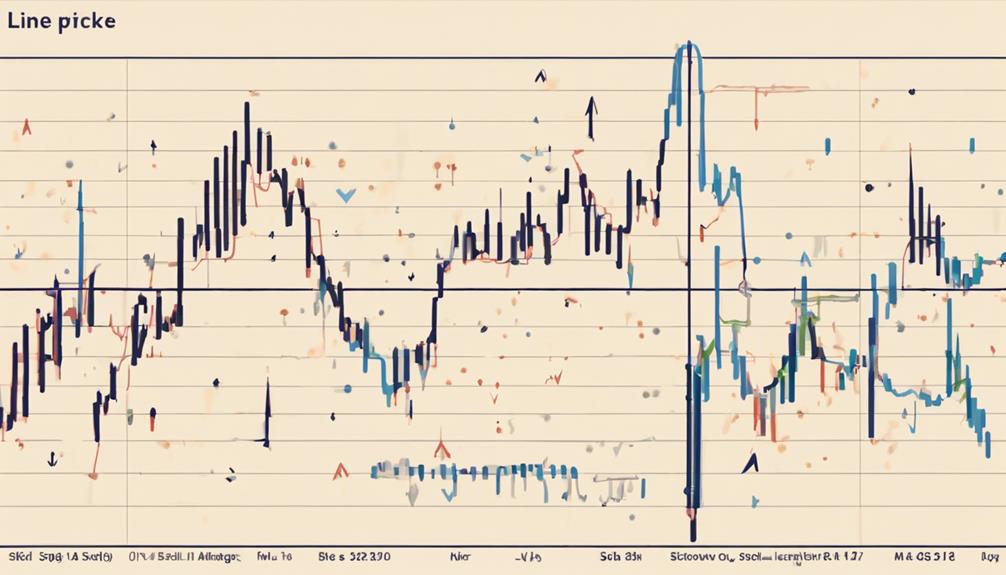
Understanding Stochastic Oscillator signals plays a pivotal role in identifying key market conditions for informed trading decisions.
The Stochastic Oscillator is a valuable tool for recognizing overbought and oversold situations in the market. Overbought conditions occur when the Stochastic Oscillator rises above the 80 line, suggesting that the asset may be overvalued and a potential reversal could be on the horizon.
Conversely, oversold conditions are identified when the Stochastic Oscillator falls below the 20 line, indicating that the asset may be undervalued and a rebound could be imminent.
Additionally, the crossover of the %K line above the %D line can signal potential buying opportunities. By understanding these Stochastic Oscillator signals, traders can make more informed decisions in their stock trading activities.
Setting Up Stochastic Oscillator Parameters
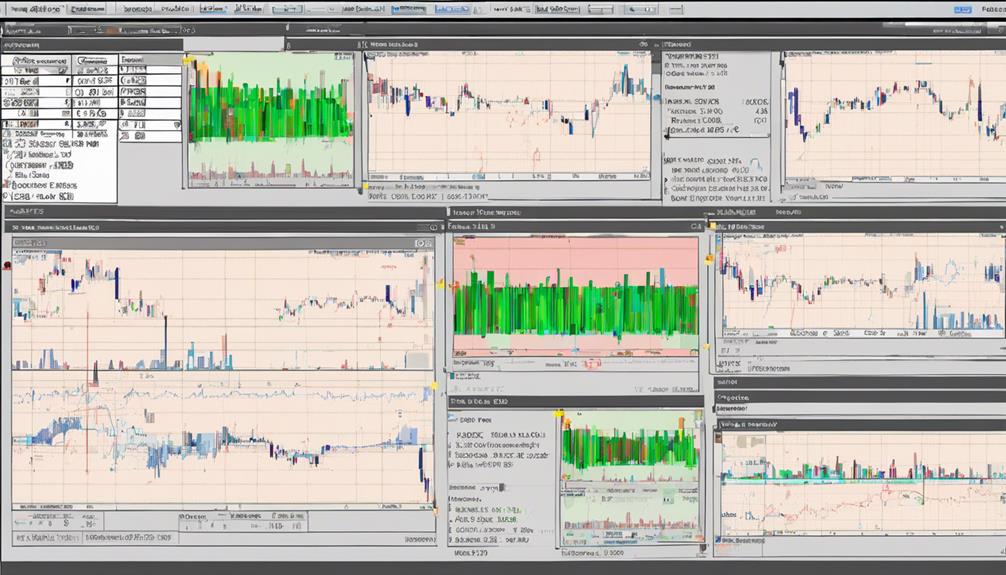
When setting up Stochastic Oscillator parameters, you must consider the importance of selecting the right values to enhance signal accuracy. Optimal timeframe considerations play a crucial role in determining the effectiveness of the indicator in different market conditions.
Customizing the parameters according to your trading strategies can lead to more tailored and precise buy and sell signals.
Parameter Selection Importance
Selecting the appropriate parameters for the Stochastic Oscillator is essential for optimizing its effectiveness in stock trading strategies. When it comes to parameter selection, here are three key points to consider:
- Period Lengths: The choice of period lengths, such as the commonly used 14 days, significantly impacts the Stochastic Oscillator's performance in generating signals.
- Optimal Parameter Selection: Finding the right balance between sensitivity to market changes and reducing false signals is crucial for successful trading outcomes.
- Market Conditions and Trading Goals: Adapting parameter settings based on current market conditions and aligning them with your specific trading objectives can enhance the overall efficacy of your Stochastic Oscillator strategy.
Optimal Timeframe Considerations
Considering the impact of timeframe adjustments on the Stochastic Oscillator's responsiveness to market dynamics is crucial for optimizing its performance in stock trading strategies.
The optimal timeframe for Stochastic Oscillator settings in stock trading is typically 14 days. This timeframe strikes a balance between sensitivity to price movements and the smoothness of signals, providing a reliable indicator for identifying trend changes.
Shorter timeframes, such as 5 days, offer more sensitive signals but can result in increased noise. On the other hand, longer timeframes like 21 days may produce smoother signals but could lag in recognizing trend reversals promptly.
Selecting the right timeframe is essential for accurate analysis and effective decision-making in stock trading strategies.
Customizing for Trading Strategies
To optimize your stock trading strategies effectively, customize the Stochastic Oscillator parameters by adjusting the time period, smoothing factor, and overbought/oversold thresholds.
- Adjust Time Period: Modify the default 14-day setting to align the indicator with your specific trading style.
- Tweak Smoothing Factor: By changing the smoothing factor from the standard 3, you can tailor the responsiveness of the indicator to suit your trading strategies.
- Set Overbought/Oversold Thresholds: Alter the typical thresholds of 80 for overbought and 20 for oversold to better reflect the market conditions you're trading in.
Fine-tuning these parameters allows you to customize the Stochastic Oscillator to enhance your decision-making process and improve the effectiveness of your trading strategies.
Identifying Overbought and Oversold Conditions
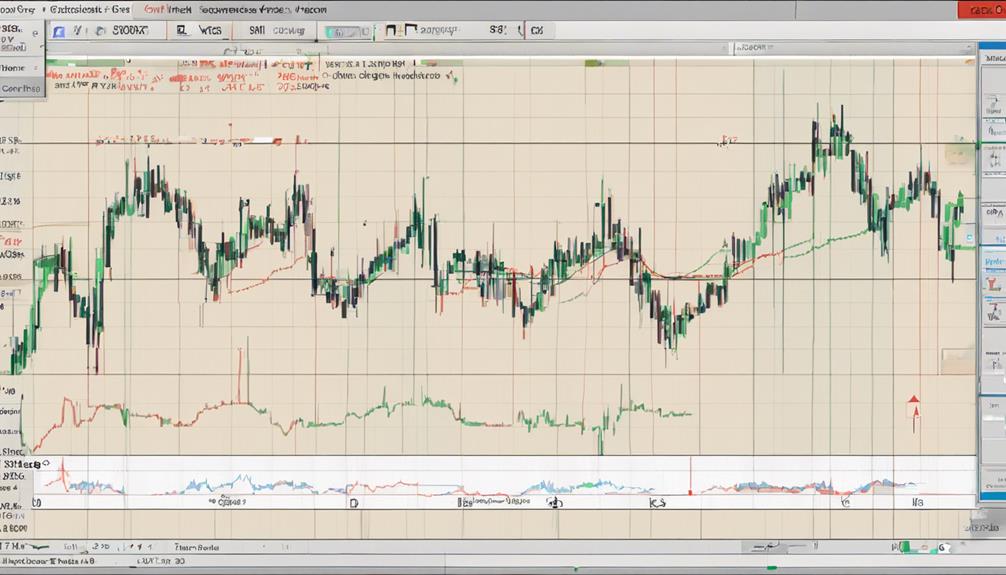
When the Stochastic Oscillator surpasses 80, it signals overbought conditions.
Conversely, when the oscillator drops below 20, it indicates oversold conditions.
These extreme levels serve as crucial points for potential price reversals.
Overbought Signals
When the Stochastic Oscillator rises above 80, overbought signals are triggered, indicating a potential downturn in the asset's price. This is a crucial point for traders to consider, as it suggests that the asset may be overvalued and due for a corrective move.
Here are three key points to help you understand overbought signals better:
- Reaching Above 80: The Stochastic Oscillator crossing above the 80 mark signifies an overbought condition.
- Price Reversal Potential: Overbought signals often precede price reversals, hinting at a possible trend change.
- Decision Making: Traders frequently use overbought signals as cues to evaluate selling opportunities or securing profits efficiently.
Being attentive to these signals can enhance your trading decisions and risk management strategies.
Oversold Indicators
After identifying overbought signals, traders shift their focus towards recognizing oversold conditions using the Stochastic oscillator readings below 20. When the Stochastic oscillator reaches extreme low levels, it indicates potential buying opportunities in the market.
Traders keen on identifying oversold conditions look for price reversals or bounce-backs as signs of a possible uptrend. These oversold signals are crucial as they suggest that the asset may be undervalued, presenting a chance for a price increase.
To time entry points effectively, traders often wait for confirmation of a bullish reversal after observing oversold readings on the Stochastic oscillator. Managing risks is also essential, with stop-loss orders set below the recent swing low to mitigate potential losses when trading based on oversold signals.
Using Stochastic Oscillator Divergence
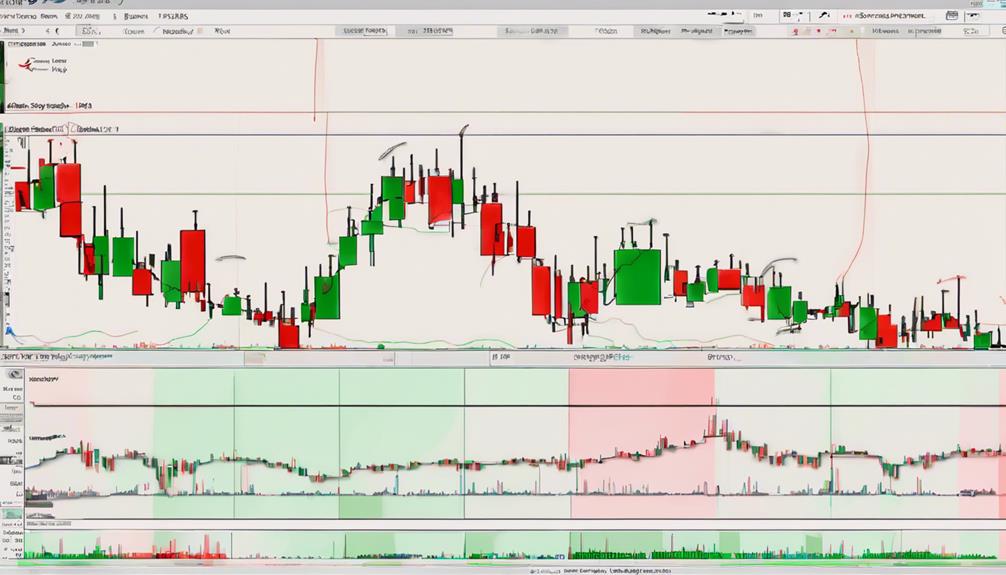
Utilizing Stochastic oscillator divergence in stock trading can provide valuable insights into potential trend reversals based on price and oscillator movements. When considering Stochastic oscillator divergence, here are three key points to remember:
- Bullish Divergence: This occurs when the price makes lower lows while the Stochastic oscillator makes higher lows, indicating a possible upward trend reversal.
- Bearish Divergence: In contrast, bearish divergence happens when the price forms higher highs while the Stochastic oscillator forms lower highs, suggesting a potential downward trend reversal.
- Confirmation: Divergence signals are often confirmed by trend line breaks and significant price movements, providing traders with actionable signals for their trading strategies. Understanding and recognizing Stochastic oscillator divergence patterns can significantly enhance your trading acumen.
Incorporating Stochastic Oscillator in Day Trading

When day trading, incorporating the Stochastic Oscillator can offer valuable insights into short-term market dynamics. By utilizing the default settings of 14,3,3, you can pinpoint opportune moments for buying and selling based on %K and %D line crossovers.
Enhance your day trading strategies by combining Stochastic Oscillator signals with other technical indicators to validate trade entries and exits effectively.
Day Trading Strategies
Incorporating the Stochastic Oscillator in day trading requires a keen focus on short-term price movements and timely entries and exits. To enhance your day trading strategies with the Stochastic Oscillator, consider the following:
- Identifying Overbought and Oversold Levels: Use the Stochastic Oscillator to pinpoint potential trading opportunities based on extreme price levels.
- Utilizing %K and %D Line Signals: Look for crossovers between the %K and %D lines as signals for buy or sell decisions.
- Combining with Other Indicators: Enhance your analysis by using the Stochastic Oscillator alongside other technical indicators to validate trade setups effectively.
Stochastic Oscillator Signals
To further refine your day trading strategies, focus on interpreting Stochastic Oscillator signals for precise market entry and exit points. Stochastic Oscillator signals are generated by %K and %D line crossovers, indicating potential buy or sell opportunities.
In day trading, when the Stochastic Oscillator signal falls below 20, it suggests oversold conditions, presenting a chance for buying. Day traders keenly watch for the %K line crossing above the %D line, signaling a bullish trend and prompting them to enter long positions.
Stochastic Oscillator for Swing Trading
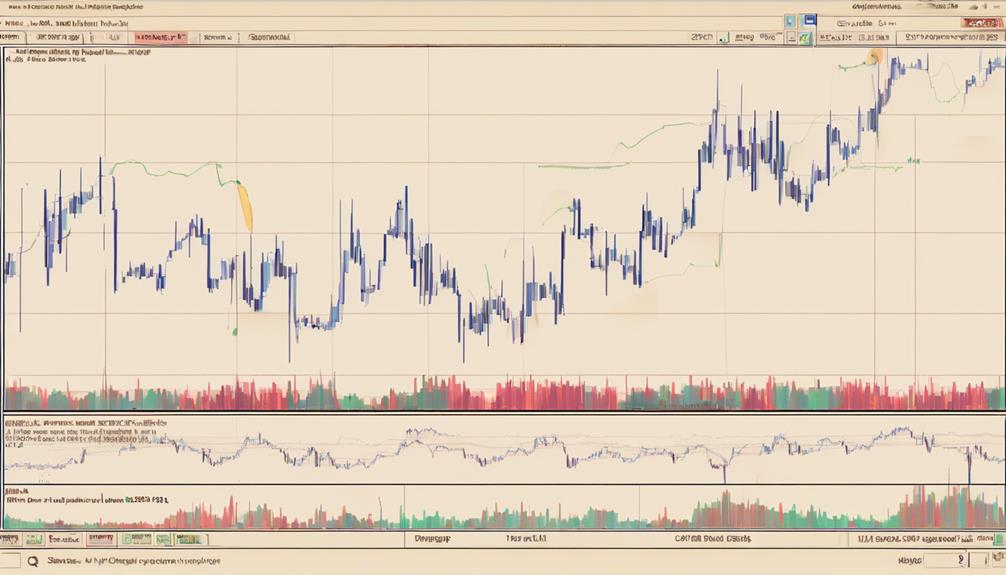
Swing trading with the Stochastic Oscillator entails capturing short- to medium-term gains by utilizing specific settings to identify potential entry and exit points. When using the Stochastic Oscillator for swing trading, it's crucial to follow certain guidelines:
- Optimal Settings: Utilize Stochastic Oscillator settings like 14, 3, 3 for effective swing trading.
- Entry and Exit Points: Look for Stochastic crossovers in the oversold region (below 20) for buy signals and overbought region (above 80) for sell signals.
- Confirmation Tools: Combine Stochastic signals with other technical analysis tools such as trendlines or moving averages to validate trading decisions.
Implementing Stochastic Oscillator Crossovers
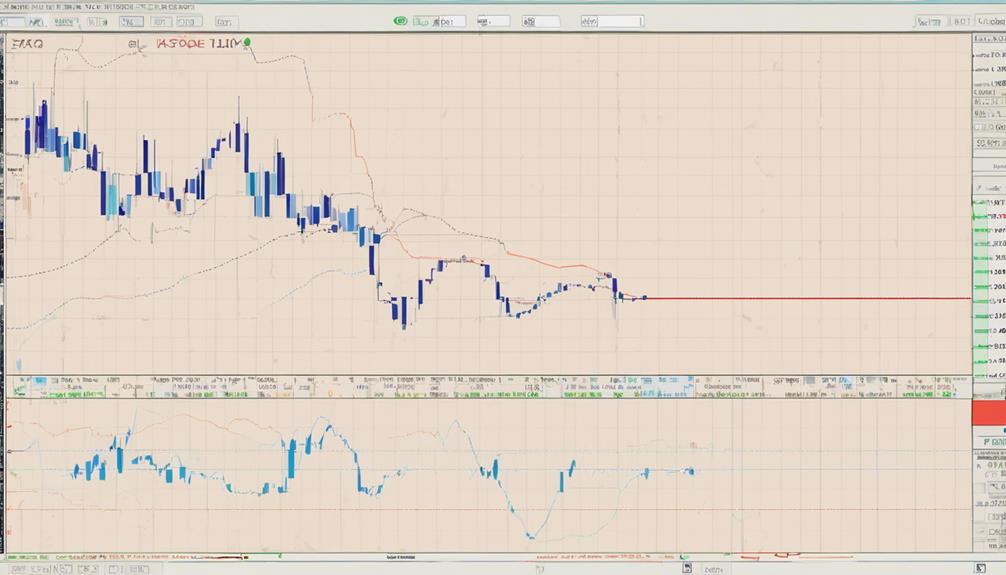
When looking to implement Stochastic Oscillator crossovers for trading, focus on the critical signals generated by %K and %D line interactions.
Stochastic oscillator crossovers occur when the %K line crosses above or below the %D line. A bullish signal is triggered when %K crosses above %D, indicating a potential buy opportunity. Conversely, a bearish signal is generated when %K crosses below %D, suggesting a possible sell opportunity.
Timing these crossovers is essential for confirming trend changes and determining optimal entry or exit points in the market. Traders frequently rely on these crossovers to produce buy/sell signals and enhance their trading strategies for improved decision-making and profitability.
Combining Stochastic Oscillator With Other Indicators
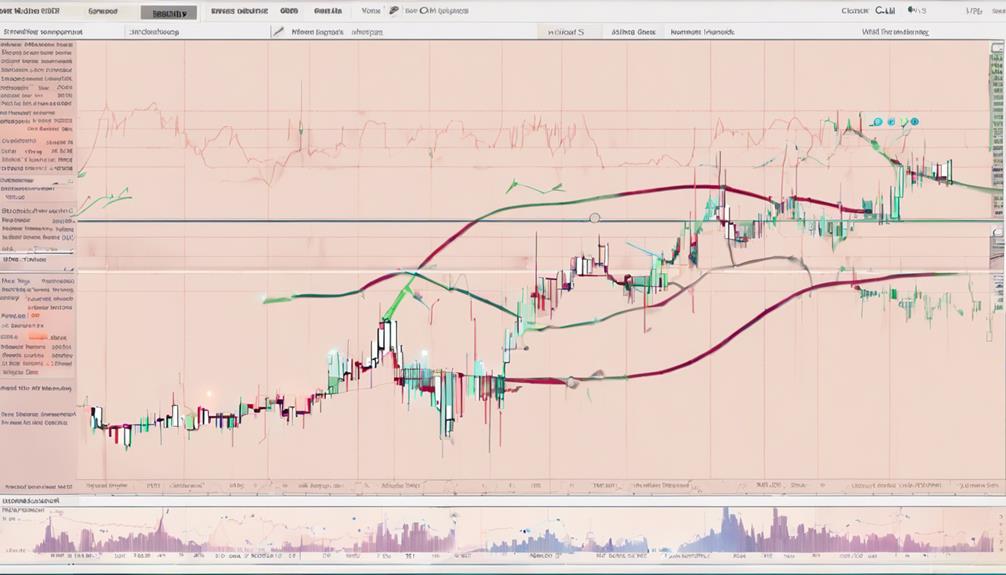
By combining the Stochastic Oscillator with other technical indicators, traders can enhance their analysis and decision-making processes in the stock market. Here are three ways to effectively combine the Stochastic Oscillator with other indicators:
- Moving Averages: Utilizing moving averages alongside the Stochastic Oscillator can offer confirmation of trend direction.
- Relative Strength Index (RSI): Combining the Stochastic Oscillator with RSI can improve the identification of overbought and oversold signals.
- Fibonacci Retracement Levels: Pairing the Stochastic Oscillator with Fibonacci retracement levels can assist in pinpointing potential reversal points accurately.
Integrating these indicators can provide a more comprehensive view of market conditions, aiding traders in making informed decisions.
Managing Risk in Stochastic Oscillator Trading
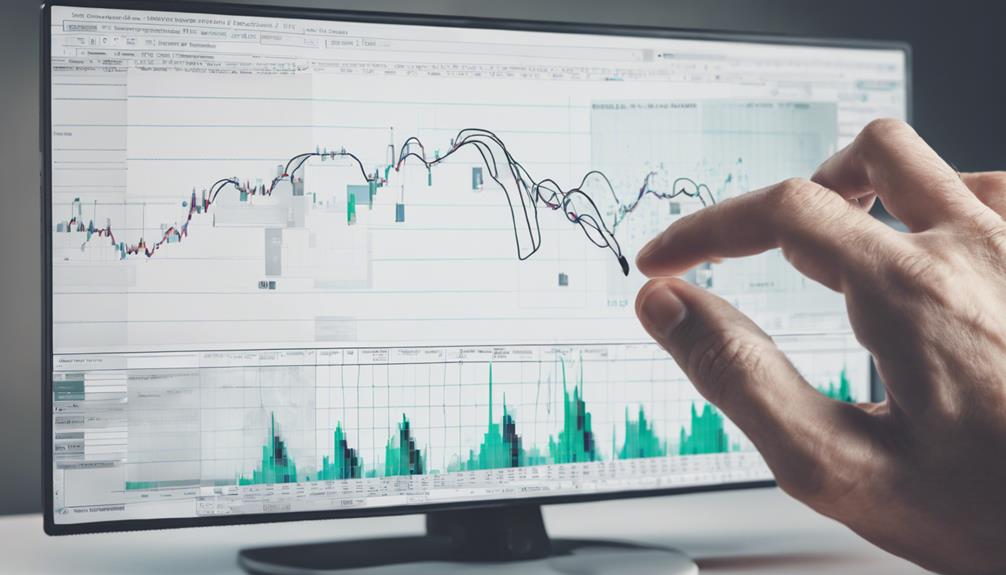
To effectively manage risk in Stochastic Oscillator trading, setting stop-loss orders based on recent swing lows is a fundamental strategy. By placing stop-loss orders at strategic levels, you can mitigate potential losses and protect your trading capital.
Additionally, determining position sizes according to your risk tolerance and account size is crucial in controlling the amount you stand to lose in any given trade. Utilizing trailing stop orders can help secure profits and safeguard against abrupt market reversals.
It's also essential to establish proper risk-reward ratios, such as 2:1, to ensure that potential gains outweigh possible losses. Regularly reviewing and adjusting your risk management strategies to adapt to changing market conditions is vital for safeguarding your trading capital in Stochastic Oscillator trading.
How Can Stochastic Oscillator Stock Trading Tips Apply to Forex Trading with Stochastic Oscillator?
When using the stochastic oscillator for forex trading, it’s important to follow the right navigation steps stochastic oscillator forex. By understanding stock trading tips and applying them to forex, traders can make informed decisions based on market trends and price momentum. Following the navigation steps ensures a systematic and strategic approach to trading.
Frequently Asked Questions
What Is the Best Stochastic Setting for Trading?
For trading, the best stochastic setting varies based on your strategy and asset class. Experiment with settings like 14, 3, 3 as a starting point. Adjust for short or long-term goals. Tailoring settings to market conditions boosts accuracy.
What Is the Best Time Frame to Trade Stochastic Oscillator?
For trading the Stochastic Oscillator, the best time frame usually aligns with your strategy and risk tolerance. Opt for the 15-minute chart for day trading or longer frames for swing trading. Experiment to find your perfect fit.
What Is Stochastic 14 3 3?
Stochastic 14 3 3 represents the default settings for the Stochastic Oscillator calculation. These numbers signify the time periods for %K, %D, and smoothing. It's a common configuration for gauging momentum and spotting market extremes.
What Is the 15 Minute Stochastic Strategy?
When trading the 15-minute Stochastic strategy, you aim to pinpoint market reversals for day trading. Watch for the indicator below 20 for long entries. Criteria include %K crossing %D and %K moving above 20. Manage risk with stop losses and target 2x profits.
Conclusion
In conclusion, mastering the 10 best tips for stochastic oscillator stock trading can be a game-changer in your trading strategy. By utilizing these techniques effectively, you can navigate the market with precision and confidence.
Remember, the devil is in the details, so pay attention to the nuances of the oscillator's signals to make informed decisions. Keep honing your skills and stay disciplined in your approach to maximize your trading success.
